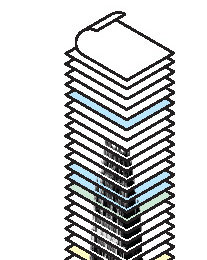 loading
loading
Light & VerityThe paperless chase Mark Zurolo ’01MFAView full image
Stack paper to the top of Harkness Tower, and then one-third higher. Then avoid printing out that many pages. Every month. That's one of the goals Yale has set itself in a new Sustainability Strategic Plan developed by a university task force and announced by President Richard Levin '74PhD this fall. From the nitty-gritty (how people get to work) to the esoteric ("ecosystem services"); from the personal (turn off your computer) to the systemic (install more fuel cells and solar water heaters), the plan lays out a wide-ranging series of goals, with deadlines of June 2013 or earlier. They build on—but reach far beyond—the university's previously announced efforts to cut climate-changing greenhouse gas emissions. Those efforts, aimed at cutting emissions 43 percent from 2005 levels by 2020, are taking a zigzag course. After an initial healthy cut, campus growth increased emissions for the second straight year in 2009. According to numbers released in October, Yale's emissions are now just 6 percent below the '05 baseline. "Our emission reduction path will likely not be linear," notes a university brochure. Yale expects improvements in the medical school power plant to pay off in the coming year. Like the greenhouse-gas plan, the new sustainability strategy sets many numerical goals: lower paper use by 25 percent. Eliminate 25 percent of solid waste while recycling 25 percent more. Trim the portion of employees and graduate students who drive to Yale alone every day (about 39 percent) by 1 to 3 percentage points. Cut workstation electricity use by 40 percent. In the realm of shelter, new construction and major renovations will "generally" reach the Gold—or second-highest—level of the green building standards known as LEED, for Leadership in Energy and Environmental Design. In the realm of food, 40 percent of purchases will meet "at least one of four sustainability criteria," the plan says: "local, eco-sensitive, humane, fair." For the first time at Yale, the plan sets quantifiable goals for sustainable transportation. Along with a modest reduction in the drive-alone rate, it aims to increase ridership on the Yale Shuttle, to add no new parking spaces beyond those already planned, and to decrease the university fleet of cars, trucks, and buses. Other goals can't yet be put into numbers, because "we realized we just didn't have enough information," says Julie Newman, director of the Office of Sustainability and the driving force behind the new plan. Land and water management are two such areas. "We were looking for data," Newman says, "but we didn't have enough to say, here's where we want to be." That's where the "ecosystem services framework" comes in. Newman has tentatively arranged with a class from the School of Forestry and Environmental Studies to help develop a comprehensive plan for "the way Yale manages land, water, and biodiversity as a system." That project exemplifies the strategic plan's aim "to formalize the campus as a living lab," Newman says. The plan will serve as "a jumping-off point to find ways in which to engage faculty and students in publishable scholarship that can also provide answers for Yale." Of course, many in the Yale community are neither teachers nor students. Educating them is also crucial to the plan's success, which depends on individual as well as institutional change. That's why Newman's office is putting together "equivalencies"—like the Harkness Tower comparison. "We've developed a plan," Newman says, "where people can find themselves in it." It'll be even easier to find themselves without those mountains of paper.
The comment period has expired.
|
|